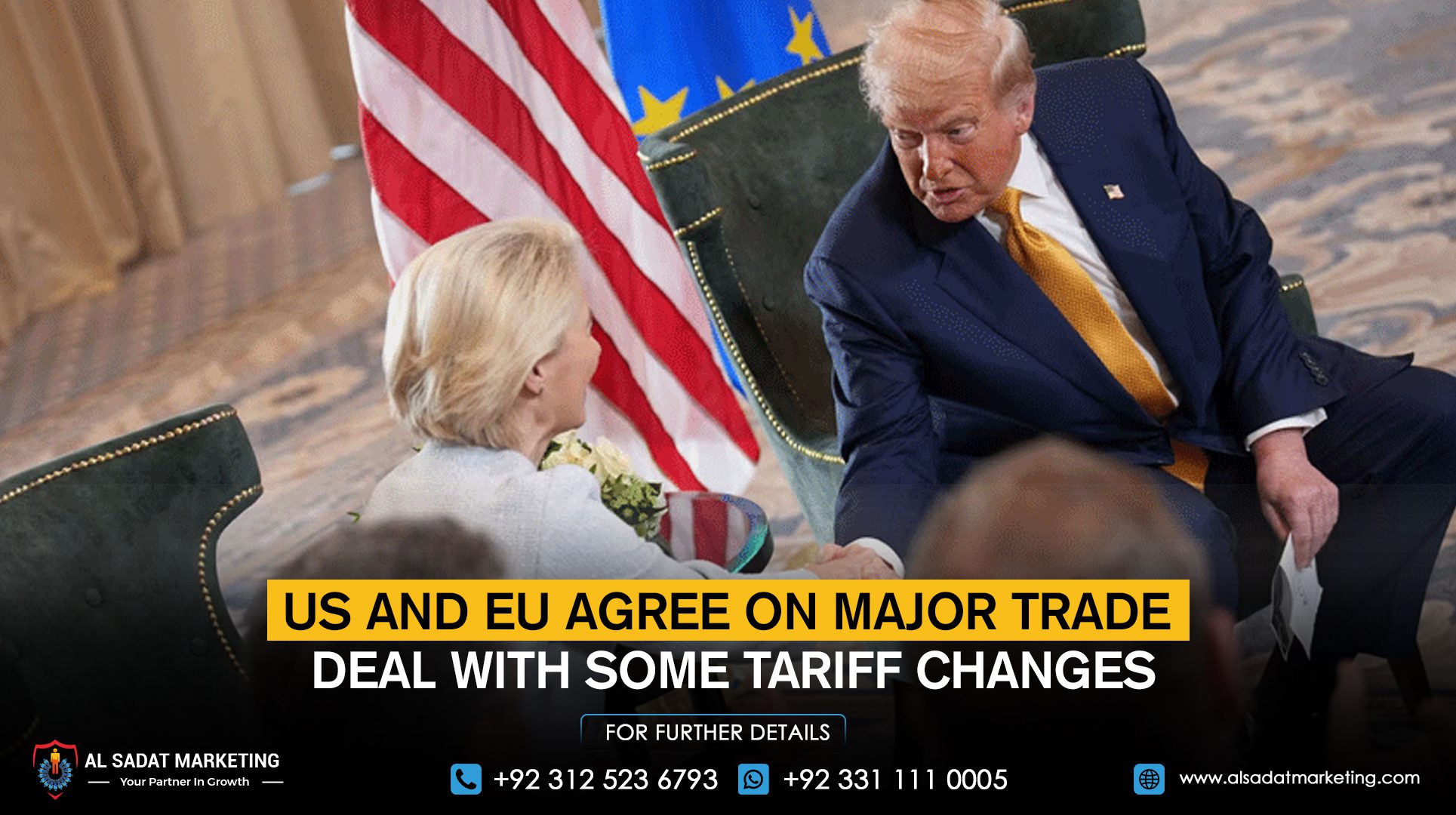After months of rising tensions between the two largest economies, the United States and the European Union have finally signed a historic trade agreement.
Both parties confirmed a new framework that will impose a 15% tariff on EU goods entering the U.S. market after high-stakes negotiations at President Donald Trump’s Turnberry golf resort in Scotland. The action follows President Trump’s prior threat of a harsher 30% rate that would take effect later this week.
In a closed-door meeting with President Trump on Sunday, European Commission President Ursula von der Leyen referred to the deal as a “stabilizing step” for transatlantic trade. At a joint press briefing, she stated, “This deal rebalances our relationship and ensures mutual benefits.”
“President Trump is a dealmaker as well as a tough negotiator.”
Gains for all parties, but at what price?
Both parties are able to claim some degree of success from the agreement. The 15% rate for the EU is much lower than what had been threatened, even though it is higher than the current tariffs. It falls short of the 10% tariff negotiated by post-Brexit Britain, but it is comparable to the figure recently agreed upon between Washington and Tokyo.
Based on trade levels from the previous year, the deal is anticipated to bring in an estimated $90 billion in tariff revenue for the US. Over the following three years, the EU also pledged to invest more than $600 billion in the US economy. This involves significant acquisitions of US energy resources, such as nuclear fuels, oil, and liquefied natural gas, as well as military hardware.
According to von der Leyen, the action would lessen Europe’s reliance on Russian energy. “It’s a strategic change that supports our energy security objectives,” she continued.
New tariffs are not applied to products.
A number of high-value goods, such as aircraft and their components, some chemicals, and several agricultural products, will continue to be free from the new tariff regime. According to reports, negotiations are underway for a separate semiconductor agreement, which may be revealed in the upcoming weeks.
The US will continue to slap 50% tariffs on international steel and aluminum shipments, nevertheless. Trump declared, “We’re keeping the steel tariffs because they protect American jobs.”
Leaders respond cautiously
Leaders in European cities responded in a measured manner, recognizing the significance of the agreement while voicing apprehension over rising trade costs.
Despite being lower than anticipated, Irish Prime Minister Micheál Martin cautioned that the new taxes would nonetheless make trading more difficult for Irish exporters. “This increases the cost and difficulty of conducting business,” he stated.
Friedrich Merz, the German chancellor, also voiced his opinion, pointing out that Germany, a significant exporter to the US, would lose in a trade war. “Everyone benefits from predictable and stable trade relations,” he wrote on X.
Giorgia Meloni, the prime minister of Italy, praised the development but pointed out that complete clarity won’t be available until the specific terms are released. Before we celebrate, we must read the fine print, she told Italy’s Ansa news agency.
Trump’s strategic success
During his five-day visit to Scotland, President Trump praised the pact as a “win-win” for both parties and called it the biggest trade agreement in history.
“This is an excellent bargain for all parties. After finishing a round of golf at Turnberry with his son Eric and a number of visitors, Trump remarked, “It brings us closer together.” On Monday, the president will meet with UK Prime Minister Keir Starmer at the same location.
About $976 billion was traded in products between the US and the EU last year. Trump has frequently criticized this disparity as proof of an “unfair” business relationship. The US imported $606 billion worth of goods from the EU while exporting about $370 billion.
There are still concerns regarding the long-term effects for European exporters, especially in industries like dairy, electronics, fashion, and pharmaceuticals, even if Washington is anticipated to benefit greatly from the new tariff regime.
However, for the time being, both parties seem happy that a full-scale trade dispute has been avoided.
On Tuesday, President Trump will go to Aberdeen, where he and his sons are anticipated to inaugurate a new golf course. To commemorate the growth of the Trump family’s golf company in Scotland, a ribbon-cutting event is scheduled.










